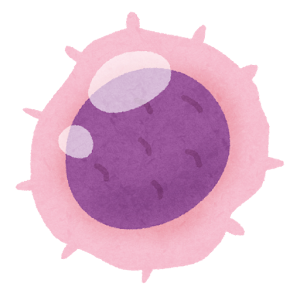腎臓内科における腎硬化症に関する会話例と英語フレーズ
**腎硬化症(Hypertensive Nephrosclerosis)**は、長期にわたる高血圧により腎臓の血管が硬化し、腎機能が徐々に低下する疾患です。
この記事では、腎硬化症に関する診察時の会話例と、診療に役立つ英語フレーズを学びます。
患者の設定
- 名前: Kenji Yamamoto (65歳、男性)
- 職業: 退職者
- 主な症状: 血圧が高い、疲れやすい、尿の量が減少している。
- 既往歴: 高血圧歴15年
- 生活習慣: 食事の塩分が多めで、運動習慣があまりない。
1. 初診での問診と症状の確認
会話例: 腎硬化症の疑いでの問診
Doctor: “Good morning, Mr. Yamamoto. I understand you’ve had high blood pressure for many years and have been feeling fatigued lately. Have you also noticed any changes in your urination, such as a decrease in the amount of urine?”
日本語訳: 「おはようございます、山本さん。長年高血圧があると伺っていますが、最近は疲れやすいと感じているそうですね。尿の量に変化、例えば減少していることに気づいていますか?」
Patient: “Yes, I’ve been feeling more tired lately, and I’ve noticed that I’m not urinating as much as before.”
日本語訳: 「はい、最近は以前より疲れやすいと感じていて、尿の量も減っていることに気づきました。」
2. 疾患の説明とリスク
会話例: 腎硬化症の説明
Doctor: “It’s possible that your symptoms are related to hypertensive nephrosclerosis, a condition where long-term high blood pressure causes damage to the small blood vessels in your kidneys. Over time, this can reduce kidney function and lead to complications.”
日本語訳: 「あなたの症状は、腎硬化症と関連している可能性があります。これは、長期間の高血圧が腎臓の細かい血管にダメージを与え、腎機能が徐々に低下していく状態です。この状態が続くと、合併症を引き起こすことがあります。」
Patient: “Is it serious? Can it be treated?”
日本語訳: 「それは深刻ですか?治療できますか?」
Doctor: “While hypertensive nephrosclerosis can’t be reversed, managing your blood pressure and making lifestyle changes can help slow the progression of the disease and protect your kidneys. The earlier we intervene, the better we can preserve kidney function.”
日本語訳: 「腎硬化症は回復できないものの、血圧の管理と生活習慣の改善によって、病気の進行を遅らせ、腎臓を守ることができます。早期に介入すれば、それだけ腎機能を維持することができます。」
3. 検査と診断
会話例: 血液検査と腎機能検査の説明
Doctor: “To assess the extent of kidney damage, we’ll need to do a blood test to measure your kidney function, specifically checking your creatinine and blood urea nitrogen (BUN) levels. We may also perform a urine test to look for any protein, which can be a sign of kidney damage.”
日本語訳: 「腎臓の損傷の程度を評価するために、血液検査を行い、腎機能を測定します。特に、クレアチニンや血中尿素窒素(BUN)のレベルを確認します。また、腎臓の損傷の兆候であるタンパク質がないかを調べるために、尿検査も行います。」
Patient: “Will the tests show how much damage has been done to my kidneys?”
日本語訳: 「これらの検査で、腎臓の損傷の程度がわかりますか?」
Doctor: “Yes, the tests will give us a good indication of how well your kidneys are functioning and whether there’s any significant damage. Based on the results, we’ll decide the best course of treatment.”
日本語訳: 「はい、これらの検査により、腎臓がどのくらい機能しているか、そして重大な損傷があるかどうかを判断できます。その結果に基づいて、最適な治療方針を決定します。」
4. 診断結果と治療法の説明
会話例: 腎硬化症の治療法の説明
Doctor: “If the tests confirm hypertensive nephrosclerosis, the main focus of treatment will be controlling your blood pressure. We may prescribe ACE inhibitors or ARBs, which are medications that help lower blood pressure and protect your kidneys. It’s also important to make lifestyle changes, such as reducing your salt intake and exercising regularly.”
日本語訳: 「検査で腎硬化症が確認された場合、治療の主な焦点は血圧の管理になります。ACE阻害薬やARB(血圧を下げ、腎臓を保護する薬)を処方するかもしれません。また、塩分摂取の減少や定期的な運動などの生活習慣の改善も重要です。」
Patient: “Will these medications stop the damage from getting worse?”
日本語訳: 「これらの薬で、損傷が悪化するのを防ぐことができますか?」
Doctor: “While the medications can’t reverse the damage that’s already been done, they can help slow down the progression of the disease and prevent further kidney damage. The key is to keep your blood pressure under control.”
日本語訳: 「これらの薬は、すでに生じた損傷を回復させることはできませんが、病気の進行を遅らせ、さらなる腎臓の損傷を防ぐのに役立ちます。血圧の管理が重要です。」
5. 生活習慣とフォローアップ
会話例: 腎硬化症の生活習慣のアドバイス
Doctor: “In addition to medications, it’s crucial to make some lifestyle changes to protect your kidneys. Reducing your salt intake, eating a healthy diet, and exercising regularly can all help manage your blood pressure and reduce the strain on your kidneys.”
日本語訳: 「薬物療法に加えて、腎臓を守るためにいくつか生活習慣の改善が必要です。塩分摂取を減らし、健康的な食事をとり、定期的に運動することで、血圧を管理し、腎臓への負担を減らすことができます。」
Patient: “I’ve been trying to cut back on salt, but it’s hard. Are there specific foods I should avoid?”
日本語訳: 「塩分を減らそうとしていますが、難しいです。避けるべき具体的な食べ物はありますか?」
Doctor: “Yes, it’s best to avoid processed foods like canned soups, salty snacks, and fast food. Instead, focus on fresh vegetables, fruits, and low-sodium options. We can also refer you to a dietitian to help you create a kidney-friendly meal plan.”
日本語訳: 「はい、缶詰スープや塩辛いスナック、ファストフードなどの加工食品は避けたほうが良いです。代わりに、新鮮な野菜や果物、低ナトリウム食品を取り入れるようにしましょう。腎臓に優しい食事プランを作るために、栄養士を紹介することもできます。」
学習ポイント
- 症状の確認: 腎硬化症に関連する症状を確認するためのフレーズを学びましょう。例: “Have you noticed any changes in your urination, such as a decrease in the amount of urine?“(尿の量に変化、例えば減少に気づきましたか?)
- 検査の説明: 腎硬化症の診断に必要な検査を説明するフレーズを学びます。例: “We’ll perform a blood test to assess your kidney function and a urine test to check for protein.“(血液検査で腎機能を評価し、尿検査でタンパク質の有無を確認します。)
- 治療法の説明: 腎硬化症の治療法を説明するフレーズを学びます。例: “We’ll prescribe medications to lower your blood pressure and protect your kidneys.“(血圧を下げ、腎臓を守るために薬を処方します。)
- 生活習慣のアドバイス: 腎臓を健康に保つための生活習慣についての表現を学びます。例: “Reducing salt intake and exercising regularly are important for managing your blood pressure and protecting your kidneys.“(塩分摂取を減らし、定期的に運動することが、血圧を管理し、腎臓を守るために重要です。)
関連キーワード: 腎硬化症, 高血圧, クレアチニン, BUN, 血圧管理, 塩分制限, 英語会話例, 外国人対応


